 When fans saw the all-world performance of the Spurs’ Danny Green in the first five games of the NBA finals, many wondered to themselves: “How did this guy slip in the draft!”
When fans saw the all-world performance of the Spurs’ Danny Green in the first five games of the NBA finals, many wondered to themselves: “How did this guy slip in the draft!”
And while countless hours of scouting, physical and mental evaluations, interviews and numbers crunching can go into the draft process, it is an inexact science in so many ways.
Green was the 46th pick of the Cleveland Cavaliers in 2009 after a solid 4-year career at the University of North Carolina. He was a 37 percent career 3-point shooter who was considered a very solid, smart defensive player. But when compared to another forward in his conference, and even to the talent on his own team, executives and scouts pushed Green to the back burner.
When scouting Green, who I watched all the way back to his days on Long Island at St. Mary’s, I noticed a high-level IQ and the ability to always seem to be the best two-way player on the floor regardless of level. Great defender with a really smart, sound offensive game.
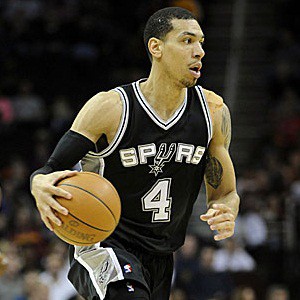 Consider that Wake Forest ‘s athletic wing James Johnson and Carolina’s Ty Lawson and Wayne Ellington were all picked way ahead of Green (16th, 18th and 28th respectively) it goes to show that Green didn’t separate himself by a position during his pre- draft workouts and didn’t do enough to instill the confidence in executives to justify taking him in the first round.
Consider that Wake Forest ‘s athletic wing James Johnson and Carolina’s Ty Lawson and Wayne Ellington were all picked way ahead of Green (16th, 18th and 28th respectively) it goes to show that Green didn’t separate himself by a position during his pre- draft workouts and didn’t do enough to instill the confidence in executives to justify taking him in the first round.
I loved Green’s two-way ability and thought he’d be a perfect fit for Mike D’Antoni’s system in New York. He would have benefitted from the same style of system he’s playing in now and would have given the Knicks a huge boost to their biggest weakness – defense. If only the Knicks could have landed him in the second round.
Here’s what Draftexpress had to say about Green in 2009:
• The immense amount of work Danny Green put into his jumper has shown this season, but some of his weaknesses continue to stand out. Green spent last summer completely overhauling his shooting form, and he ranks as the fifth best catch and shoot player when left open in our sample at 1.34 PPP. Though his consistency dips to a questionable .85 PPP when he has a hand in his face, Green’s .91 PPP on pull-up jumpers help compensate for that. Playing for the best open-court team in college basketball obviously has its perks, his 105 transition opportunities (nearly 20 attempts than the next higher player) definitely jump off the page, although his average athleticism and ball-handling skills only allowed him to convert on 50% of his field goal attempts in these situations—which ranks amongst the worst in this small forward class. He struggles in isolation situations and running the pick and roll for these same reasons, and only converted on 71 of his 135 shots around the rim, for a dismal 53%. While his shortcomings are pretty obvious, he still brings quite a bit to the table in terms of his role-player potential, being able to make open shots and play lock-down defense, which is what he’s most known for.
Pretty accurate assessment, and one that has proven true based on the situation he’s in now in the Lone Star State. Green benefits from a spread system and takes advantage of catch and shoot situations and is a superior perimeter defender. This proves to me something I’ve always said — many players in every draft, regardless of where they are chosen, can succeed if put in the right situation like Green has been. Too many players and agents thirst for their guaranteed first contract and don’t value the second. Green earned his guaranteed payday thanks to timing and hard work.
This draft has players who, like Green, can get drafted later and make major waves if put in the right situation.
Here are a half-dozen to keep an eye on.
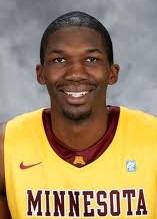 Trevor Mbakwe, 6’8″ Power Forward, Minnesota (10.0 ppg, 8.7 reb) – One of the oldest players available on draft night (24), the sixth-year senior with a 7’4″ wingspan can be a nice addition to teams in need of protecting the rim.
Trevor Mbakwe, 6’8″ Power Forward, Minnesota (10.0 ppg, 8.7 reb) – One of the oldest players available on draft night (24), the sixth-year senior with a 7’4″ wingspan can be a nice addition to teams in need of protecting the rim.
Plus he doesn’t need the ball because he hungers to take it from opponents. He won’t dazzle you offensively, but can play in NBA rotations right now and be efficient per minute.
Mkakwe started his career back in 2007 at Marquette. He had a knee injury, a junior college stint, an assault charge, two seasons without games, a very solid junior season – and then another knee injury that ended his 2011-12 season.
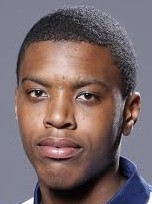 Ricky Ledo, 6’6″ Shooting Guard, Providence (DNP-Academics) – If I were to pick a player close to Green’s offensive upside it would be Ledo, who never stepped foot in the Big East after being declared academically ineligible.
Ricky Ledo, 6’6″ Shooting Guard, Providence (DNP-Academics) – If I were to pick a player close to Green’s offensive upside it would be Ledo, who never stepped foot in the Big East after being declared academically ineligible.
Coaches have told me if he had played, Providence would have won at least 4 more league games. That’s how good this kid is. He may be the best shooter in the draft and can play 3 positions, including the point.
Teams already circling the wagons to take him include Cleveland, Boston and Oklahoma City.
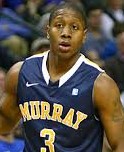 Isaiah Canaan, 6’0″ Point Guard, Murray State (22.4 ppg, 4.3 ast) – Much like Norris Cole gives the Miami Heat plenty of productive minutes filling a need as a perimeter shot maker, Canaan can help teams in desperate need of perimeter production.
Isaiah Canaan, 6’0″ Point Guard, Murray State (22.4 ppg, 4.3 ast) – Much like Norris Cole gives the Miami Heat plenty of productive minutes filling a need as a perimeter shot maker, Canaan can help teams in desperate need of perimeter production.
While his shot attempts from 3 increased (the kids call this usage), causing his overall percentage to drop to 37% for the season, Canaan made 192 triples over his last two seasons. He can shoot off the dribble and can catch and make. He’s not tall, but for teams that can allow him to find spots and hide in half court situations, Canaan can make defenses pay from deep.
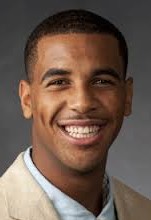 Brandon Davies, 6’10, PF/Center, BYU (17.8 ppg, 8.1 rpg) – You may remember Davies as the guy kicked off Jimmer Fredette’s team (during Davies’ sophomore season) for having sexual relations, which is against school rules, but you’ll learn to know him when he kicks off his NBA career.
Brandon Davies, 6’10, PF/Center, BYU (17.8 ppg, 8.1 rpg) – You may remember Davies as the guy kicked off Jimmer Fredette’s team (during Davies’ sophomore season) for having sexual relations, which is against school rules, but you’ll learn to know him when he kicks off his NBA career.
This kid has all the tools to be an immediate glue guy in the NBA and has the frame to log heavy minutes every night. The big question is whether he can evelop a mid-range jumper that he’ll need to draw his defender out of the paint, but whoever drafts Davies is getting a player who, barring injuries, will have a long and active NBA career.
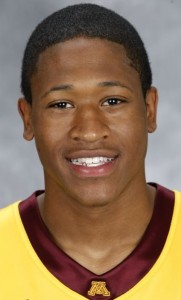 Rodney Williams, 6’7, Small Forward, Minnesota (10.1 ppg, 5.0 rpg) – Here’s a kid that I’ve been monitoring for some time and I’ve watched him climb onto NBA mock drafts in the second round. I absolutely love his athleticism and his ability to cover passing lanes.
Rodney Williams, 6’7, Small Forward, Minnesota (10.1 ppg, 5.0 rpg) – Here’s a kid that I’ve been monitoring for some time and I’ve watched him climb onto NBA mock drafts in the second round. I absolutely love his athleticism and his ability to cover passing lanes.
He’s a highlight ready to happen if you throw a lazy cross court pass. I do like that he played in a pro style system and that he stayed four years. That shows great character and an ability to be coached. If he can learn to develop his offensive game just a bit more, this kid is an absolute steal. He reminds me of a young Trevor Ariza.
 Tyler Brown, 6’4″ Shooting Guard, Illinois State, (18.1 ppg, 4.4 ast) – I’m sticking to my guns here.
Tyler Brown, 6’4″ Shooting Guard, Illinois State, (18.1 ppg, 4.4 ast) – I’m sticking to my guns here.
I had him as the best player I saw at Portsmouth, and that included the likes of Davies. He’s also recently found himself creeping on to mock boards and NBAdraft.net has him 100th on their big board.
Granted, I’d be shocked if he got drafted, but keep an eye out for Brown. He’s athletic, can slash and has high-level scoring potential, all the things I look for in a potential sleeper.
(RELATED: The 12 NBA Talents on Display at Portsmouth NBA Pre-Draft Camp)
(RELATED: Mock Draft 6.0.1)
Tommy Dee is the founder of TheKnicksBlog.com, one of the founders of CHARGED.fm and has been scouting for Blake and Associates for the past 3 years.
Agree about Mbakwe…….totally. WIll be a steal. Id add Ray McCallum Jr , the coaches son……detroit. Smart smart, and more athletic than advertised. And super sleeper Dwayne Davis of so miss. You watch……..he has that mojo. Same with Carrick Felix of arizona. Big desire on these guys. And Andre Roberson…..cant shoot, but elite defender, can guard three positions, well.